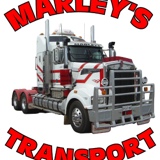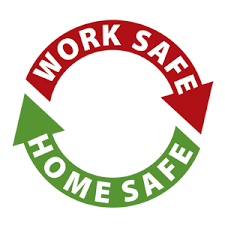Information
-
Document No.
-
Client
-
Site Name
-
Location
-
Conducted on
-
Prepared by
-
Other Personnel Involved
Introduction
-
The consequences of being hit by loadshifting equipment and other vehicles can be serious, resulting in injury or even death. There is a significant cost to the victim, the employer, the victim?s family and the community. This Traffic Management Plan Checklist provides guidance to managers and supervisors of small to medium businesses on how to develop, implement and maintain safe systems of work, intended to eliminate or control the risks of collision in a warehousing and/or storage environment. An important part of managing your business is to ensure the health and safety of your employees and other people, such as customers, visitors or tradespeople who visit your workplace. To ensure you fulfil your obligation for a safe workplace, you need to be aware of what can cause harm and then take action to ensure no one is at risk while they are in your workplace.
-
The following questions will help you evaluate how well you are currently managing safety in your workplace:
-
Do you talk with your employees about safety issues?
-
Do you encourage your employees to report safety problems?
-
Do you regularly inspect your workplace to identify safety problems?
-
Do you fix identified problems?
-
Do you supervise and train employees so that all work is carried out safely?
-
If you answered "No" to any of the above questions, you may not be meeting all of your obligations under the Occupational Health and Safety Act 2000 (the OHS Act). Even if you answered Yes to all these questions, this Traffic Management Plan Checklist will help you to systematically identify the traffic management safety risks in your workplace and take the necessary steps to make your workplace safer. When using the Traffic Management Plan Checklist, it is important to involve your employees, as they are the people most affected by safety issues and can help to identify the best safety solutions. Involving your workers is one of your obligations under The OHS Act, to consult with your employees on workplace safety issues, including when developing safe work procedures. When you complete the Traffic Management Plan Checklist, it is important to determine how often it needs to be reviewed. As a guide, it is a good idea to review the Traffic Management Plan Checklist at least once a year. However, you may also need to review the Traffic
Management Plan Checklist if there are changes to your workplace that may impact on safety, eg when new equipment is introduced into the workplace, in situations where plant/processes are modified and during seasonal peak periods.
By completing this Traffic Management Plan Checklist, identifying and controlling any problem areas and reviewing it regularly, you will be well on your way to meeting your legal obligations to provide a safe and secure workplace."
Instructions
-
Simply tick "Yes" or "No-HP", "No-MP", "No-LP" (High, Medium, Low Priority) to each question and add any comments you consider appropriate. If the question does not apply to your workplace, tick ?N/A?. If you tick ?No? to any question you will need to take action to rectify the issue. An action plan template is provided in this Traffic Management Plan Checklist and may be used to map the necessary steps required to make your workplace safer.
Loadshifting Equipment
1. Loadshifting Equipment
-
1.1 Is a forklift required for this job?
-
1.2 Have you studied the loadshifting equipment and pedestrian movement in the workplace to identify the risk of collision with a pedestrian?
-
1.2a Have you implemented control measures to address the risks identified in the above study?
-
1.2b Have you implemented appropriate measures to monitor the effectiveness of the controls?
-
1.3 Have you determined parking areas for loadshifting equipment?
1.4 Are daily pre-operational checks being completed for these components:
-
* falling object protection<br>
-
* brakes<br>
-
* seat belts (where fitted)<br>
-
* lights<br>
-
* warning devices (reversing beeper)<br>
-
* steering<br>
-
* tyres<br>
-
* controls<br>
-
* horn<br>
-
* mast and hydraulics<br>
-
* chains<br>
-
* hand brake<br>
-
* load capacity plate<br>
-
Additional information/comments/findings
Area/Surrounds
2. Barricades/Barriers/Bollards
-
2.1 Are physical separation structures installed to keep pedestrians out of loadshifting areas? (they may be essentially visual in nature or only strong enough to resist accidental actions by the pedestrian)
-
2.2 Are pedestrian crossings clearly marked?
-
2.3 Are adequate bollards and safety railings being used to reduce the risk of vehicle and pedestrian collision in the battery charging area and waste bin work zones?
-
2.4 Do entry and exit points to the building protect pedestrians from being struck by vehicles?
-
Additional information/comments/findings
3. Layout/Line Marking
-
3.1 Is there an effective workplace layout to separate pedestrian and powered loadshifting equipment traffic?
-
3.2 Is there effective line marking to separate pedestrian and powered loadshifting equipment traffic?
-
3.3 Do you have a site plan clearly identifying pedestrian walkways and traffic directions
-
3.4 Do you review the site plan regularly (at least annually), have it dated and signed off by the OHS Committee/Representative and Site Manager.
-
Additional information/comments/findings
4. Signage/Warning Devices
-
4.1 Is there adequate lighting and visibility to minimise the risk of collision?
-
4.2 Is there clear warning of loadshifting equipment hazards?
-
4.3 Is there adequate signage warning pedestrians of loadshifting equipment operating areas?
-
4.4 is their adequate signage restricting the speed limit of loadshifting equipment in certain areas?
-
Additional information/comments/findings
Training, Systems, Policies, Procedures
5. Licences and training
-
5.1 Are all operators adequately trained and competent, even for machines that do not require a Certificate of Competency?
-
5.2 Do you ensure other people (eg visitors, delivery drivers, etc) are NOT allowed to operate machinery without assessing their competency and sighting relevant Certificates of Competency?
-
5.3 Are operation manuals for plant available for operators to read?
-
5.4 Do you keep copies of loadshifting operators? Certificates of Competency and are they current?
-
Additional information/comments/findings
6. Site Induction/Visitors
-
6.1 Are all employee's inducted into the site?
-
6.2 Are all visitors and contractors inducted into the site and signed in OR Un-inducted personnel must be escorted at all times?
-
6.3 Have you ensured pedestrians are aware of traffic management rules, including not walking behind loadshifting equipment when in operation and staying on designated walkways and pedestrian areas
-
6.4 Are there designated "Safe Zones" for delivery drivers to wait while loading/unloading?
-
Additional information/comments/findings
7. Safe work procedures
-
7.1 Are safe work procedures in place for operators of load shifting equipment?
-
7.2 Are pre-use inspection procedures used to check for obvious defects?
-
7.3 Is there a means to ensure loads do not exceed the capacity of the equipment?
-
7.4 Is there a loadshifting equipment key control procedures to ensure only competent operators use the equipment?
-
7.5 Do loadshifting equipment to cease work if pedestrians enter a pedestrian exclusion zone?
-
7.6 Do loadshifting equipment operators to keep the tynes as close to the floor as practical when travelling and operating within the site?
-
7.7 Do loadshifting equipment operators to ensure that their load (mast) has appropriate rearward ?tilt? prior to moving pallet/stock and not travel with tynes extended?
-
7.8 Do loadshifting equipment operators lower their loads before turning in the direction of travel?
-
7.9 Do loadshifting equipment operators sound horn (warning device) when crossing intersections, pedestrian walkways and access and egress points for pedestrians?
-
7.10 Do loadshifting equipment operators ensure loadshifting equipment is NOT to be used to move or shunt another piece of equipment?
-
7.11 Is there no evidence of tampering or modifying of loadshifting equipment by staff?
-
7.12 Is there an ?Out of Service?/?Danger? tag system clearly understood and carried out by loadshifting operators?
-
7.13 Do operators of loadshifting equipment ensure they travel in reverse if the load obstructs their view?
-
Additional information/comments/findings
Personal Protective Equipment
8. Clothing
-
8.1 Do pedestrians and drivers (internal and external) wear high visibility clothing?
-
8.2 Have you got high visibility clothing (e.g. vest) available for visitors or other employees accessing trafficable areas?
-
8.3 Do you have a policy regarding appropriate footwear in the workplace?
-
Additional information/comments/findings
External Traffic Management Requirements
9. Site
-
9.1 Do you have external controlled speed limits in place for trucks, customers or visitors vehicles to site?
-
9.2 Have you provided safe access and egress to and from your site for pedestrians?
-
9.3 For common areas where pedestrians and vehicles are required to operate within the same area, have you provided adequate safety measures?
-
Additional information/comments/findings
Summary/Notes/Recommendations
-
Add signature











